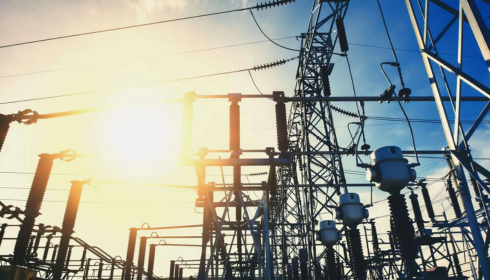Ever wondered why your neighbor’s business seems to pay a different price for electricity than you do at home? It’s one of those questions that sounds simple but gets tangled up in the details once you start looking closely. Electricity pricing isn’t just about the numbers on your bill — it’s about usage patterns, supply demands, and how utilities structure rates to keep the grid humming. Let’s unpack this in plain English.
The Basics of Electricity Pricing
Electricity, for all its invisible simplicity, is a business built on infrastructure. The cables, transformers, and substations that bring power to your home or shop don’t run themselves. Energy companies calculate rates based on the type of consumer and the demand pattern — and that’s where the big difference begins between residential and commercial users.
Homes typically use power in bursts: mornings, evenings, weekends. Businesses, on the other hand, consume steady amounts of electricity throughout the workday, often in large volumes. This consistent demand gives utility providers stability — and stability, as in most industries, often leads to better rates. That’s one of the reasons people often ask, “is business electricity cheaper than residential”, and the honest answer is: sometimes yes, sometimes no.
Understanding How the Grid Treats Different Users
Residential electricity plans are designed to cover small-scale, often inconsistent consumption. Your dishwasher runs once a day, lights switch on and off, and the air conditioning kicks in when needed. But a restaurant, printing press, or office complex uses electricity in a predictable, continuous way.
Because of this, utilities can forecast commercial usage more accurately, which allows them to offer different pricing models. Businesses might also have the leverage to negotiate better rates or qualify for lower-cost “time-of-use” tariffs if they consume energy during off-peak hours.
Yet, it’s not as black and white as it sounds. While commercial rates might look lower on paper per kilowatt-hour, those savings can vanish once demand charges, taxes, and service fees are added. So the question “is business electricity cheaper than residential” really depends on how — and when — you use it.
Peak Demand and Load Factor: The Hidden Influencers
Here’s a bit of behind-the-scenes logic. When a business suddenly draws a huge surge of electricity — say, when heavy machinery starts up — the utility must ensure the grid can handle it. This is called peak demand, and it can drive up costs dramatically.
Homes, even with all their modern gadgets, don’t typically create such massive fluctuations. That’s one reason residential rates sometimes end up appearing more stable, even if they seem higher per unit.
So while a commercial customer might pay less per kilowatt-hour, their demand charges — those extra fees for sudden high usage — can bump the total bill higher than a comparable home’s.
It’s a balancing act: predictability vs. intensity.
The Role of Tariffs and Market Regulation
Most countries regulate how energy companies price electricity for different sectors. Residential users often receive government protection, subsidies, or capped rates to make sure families can afford power. Businesses, on the other hand, are treated as commercial entities that can shop around, negotiate contracts, or even switch suppliers.
In deregulated energy markets (like much of the U.S. and U.K.), companies can negotiate competitive deals directly from wholesale providers. A large warehouse, for instance, could lock in a long-term low-cost plan, while a small bakery might still pay more simply because it lacks the buying power.
The comparison between “commercial rate vs residential rate” isn’t just about price — it’s also about flexibility and control. Businesses often have more room to optimize, while households typically pay fixed retail prices with fewer options.
Why Businesses Sometimes Pay More
Now, here’s where it flips. Some commercial users actually pay higher rates than residential customers. Why? Infrastructure and scale. Serving a business often means higher transmission capacity, three-phase power systems, and industrial-grade maintenance. Utilities pass those costs along.
Moreover, small and medium-sized enterprises (SMEs) often fall into a gray zone — not big enough for wholesale pricing, but too large for residential protection. That’s why your favorite café might grumble about energy costs even when the local utility promotes “lower commercial rates.”
How You Can Use This Knowledge
Whether you’re managing a household budget or running a small business, understanding these rate structures helps you make smarter choices. If you own a business, explore your local utility’s rate options. Some utilities offer real savings for shifting energy-heavy tasks to off-peak hours.
Homeowners, meanwhile, should check for time-of-use plans or renewable add-ons. Installing smart meters, solar panels, or battery storage can also make a dent in overall costs. Energy efficiency — whether through LED lighting, insulation, or better scheduling — is the real equalizer in this game.
The Bottom Line
So, circling back — is electricity cheaper for businesses? The honest answer: it depends. Big corporations with predictable usage often pay less per unit, while small businesses might actually pay more than residential users once all the add-ons are included.
What’s clear, though, is that electricity pricing isn’t arbitrary. It’s a reflection of behavior, risk, and infrastructure demand. If you use more but use it smartly, you can often save more, regardless of whether you’re at home or work.
Understanding your rate structure, reading the fine print, and comparing plans can go a long way toward cutting costs — because in the world of energy, knowledge really does translate into power.

